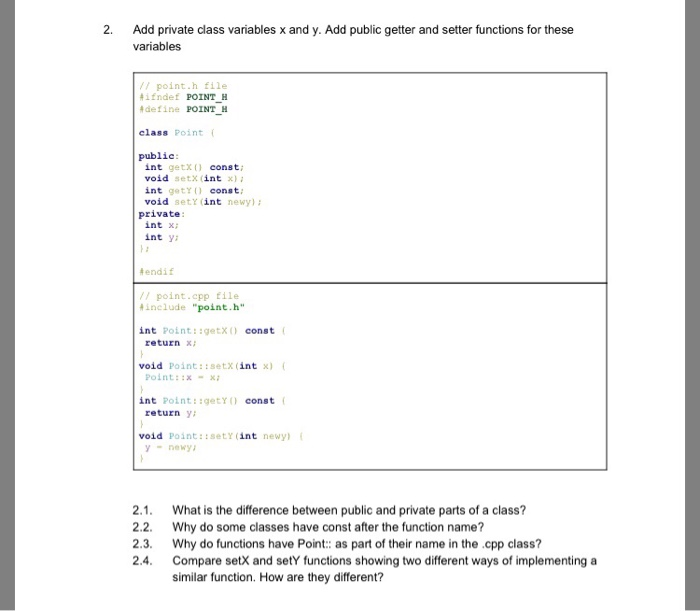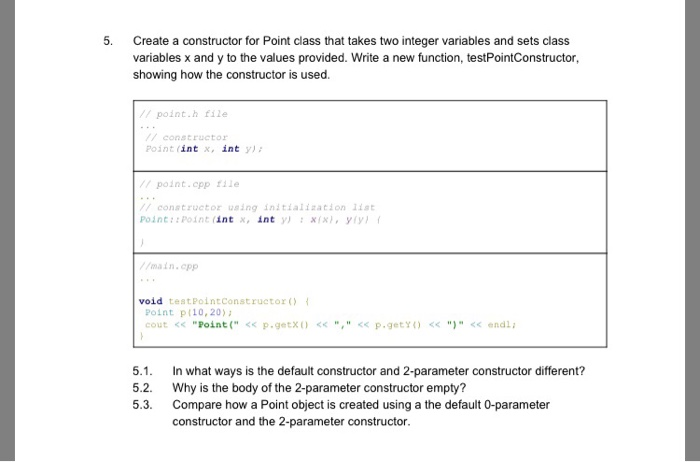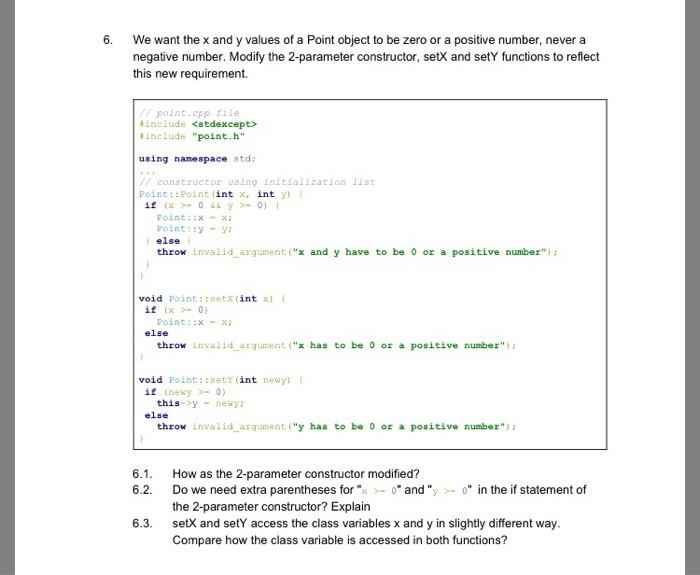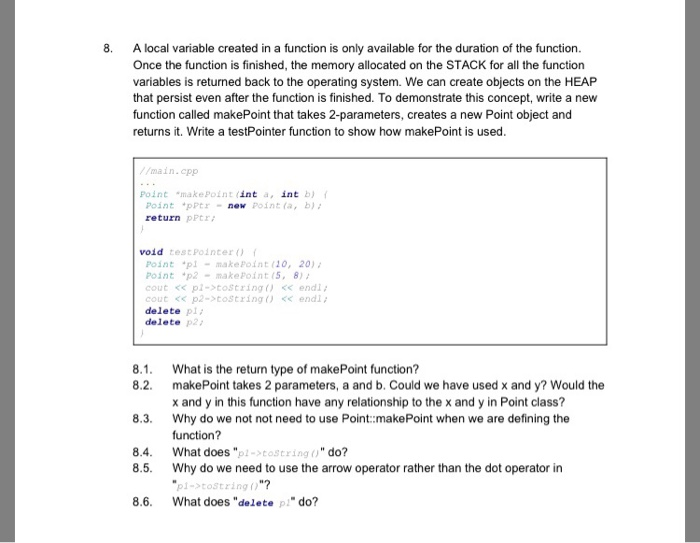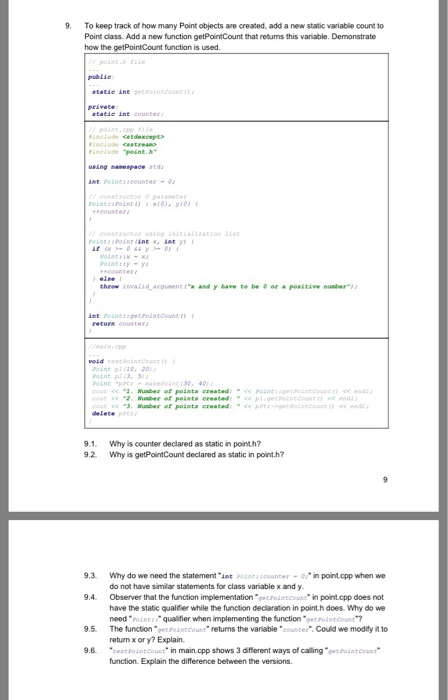Computer science questions for each picture
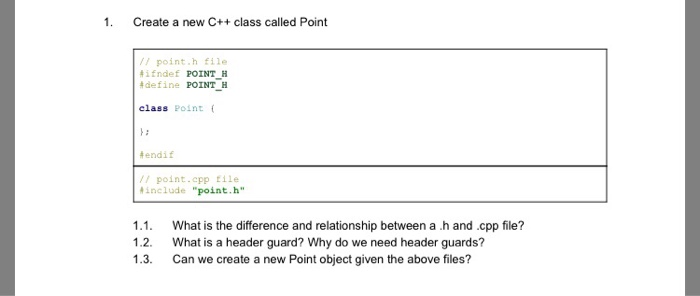
1. Create a new C++ class called Point // point.h file ifndef POINT H define POINT H class Point ( tendif point.cpp tile *include "point . h" 1.1. What is the difference and relationship between a h and .cpp file? 1.2. What is a header guard? Why do we need header guards? 1.3. Can we create a new Point object given the above files? 2. Add private class variables x and y. Add public getter and setter functions for these variables // point.h file # i fndet POINT H Idefine POINT H class Point public int getx const void setx (int x) int getY) const void setY (int newy) private int x int yi tendif // point.cpp Eile include "point.h" int Point::getX0 const return x void Point::setx (int x) Point::xxi int Point:sgetYO const return y void Point::sety (int newy) 2.1. What is the difference between public and private parts of a class? 2.2. Why do some classes have const after the function name? 2.3. Why do functions have Point: as part of their name in the cpp class? 2.4. Compare setx and set functions showing two different ways of implementing a similar function. How are they different? 3. Add a new function, testPoint, in main.cpp that creates a Point object, sets x and y values and then prints them main.cpp include ciostream> include "point-h" using nameapace atd void testPoint) Point p p.setx (10) p.sety (20) cout / constructor using initialization Iist point : :Pointiintx, nt y} { Point: :x-x Point::y-y: else throw invalid argument ("x and y have to be 0 or a positive number" void Point::setx (int x) ( if (x -0) Point::i else throw nvalid argument ("x has to be 0 o a positive number") void Point::sety (int newy) (ewy0) this-y -newy else throw invalid argument("y has to be 0 ox a positive numbe") 6.1 How as the 2-parameter constructor modified? 6.2. Do we need extra parentheses for "x-and"y" in the if statement of the 2-parameter constructor? Explain 6.3. setx and setY access the class variables x and y in slightly different way Compare how the class variable is accessed in both functions? 7. Implement a toString function in point class so that we can print Point objects more easily. Modify testPointConstructor to use the new toString function point.h file i frdef POINT H define POINTH include
std: istring tostring)const point.cpp file include Include include"point.h" string Point::tostring) const f ostringstzeam out out y tostring )


